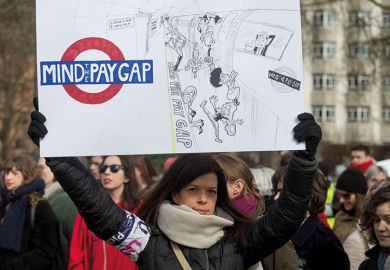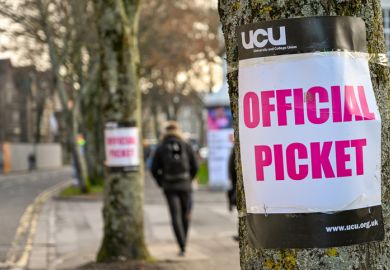The gender pay gap means that women in UK higher education will in effect work the rest of the year for free, figures suggest, earning almost £4,000 less than men on average.
Analysis of official government records also reveals which universities have the widest and narrowest gaps in salaries between men and women.
Equal Pay Day 2022, a national campaign organised by the Fawcett Society, marks the day the average woman will in effect stop earning relative to a man because of the gender pay gap – which this year falls on 20 November.
The Fawcett Society calculated that the mean, full-time hourly gender pay gap across the whole of the UK is 11.3 per cent in 2022.
New figures from Advance HE show that the mean pay gap in higher education in 2020-21 was slightly higher, 14.8 per cent.
The median higher education salary – used to avoid outliers – was £36,914 for the average woman and £40,322 for the average man, giving a gap of 8.5 per cent.
Advance HE said pay gaps were wider among academic staff than professional and support staff, with the largest discrepancy coming for managers, directors and senior officials within academic roles (12.3 per cent median pay gap).
Meanwhile, the median pay gap for UK professors was 6.2 per cent, well below the 10.6 per cent among non-professors.
All UK employers with at least 250 staff must report the gender pay gap within their organisation to the government.
Times Higher Education analysed these records for all British employers classed as providing first-degree level higher education in 2020-21.
Analysis shows that AECC University College, a specialist health science institution in Bournemouth, had a median hourly pay gap of 39.2 per cent – the widest in Great Britain.
This was followed by Harper Adams University (31.6 per cent) and the University of Reading (25.4 per cent).
Women earned more than men in just one institution – music education provider BIMM University Limited, where the gender pay gap was −3.4 per cent.
And there were five universities (Staffordshire University, Wrexham Glyndwr University, the University of Roehampton, the University of Worcester and Solent University) where salaries were equal.
It was “deeply disappointing” that the gender pay gap across the whole of the UK had barely shifted in the past few years, said Jemima Olchawski, chief executive of the Fawcett Society.
“The cost-of-living crisis is hitting women the hardest and forcing them to make impossible choices,” she said.
“Other data indicates that the pay gap may be even worse for women of colour – though we still don’t know the full picture.”
Register to continue
Why register?
- Registration is free and only takes a moment
- Once registered, you can read 3 articles a month
- Sign up for our newsletter
Subscribe
Or subscribe for unlimited access to:
- Unlimited access to news, views, insights & reviews
- Digital editions
- Digital access to THE’s university and college rankings analysis
Already registered or a current subscriber?








